In today’s interconnected world, receiving calls from unknown numbers is a common occurrence that can leave individuals curious and sometimes concerned about the identity of the caller. The service code “1472” offers a solution to this uncertainty by allowing users to retrieve information about the last incoming call to their phone number. This article explores the functionality of “1472,” its benefits, limitations, alternative methods for identifying callers, practical tips for managing unknown calls effectively, and delves deeper into the implications of caller identification in modern communication.
Understanding “1472”
“1472” is a service code provided by select telecom operators that enables users to discover the phone number of the last caller to their number. By dialing “1472” followed by the appropriate command, individuals can access details about the incoming call without needing to directly interact with the caller or check extensive call logs.
How Does “1472” Work?
The operation of “1472” varies depending on the telecom provider and geographical location. Generally, when a user dials “1472,” their phone interacts with the network’s database to retrieve information associated with the most recent incoming call. This information typically includes the caller’s phone number and, in some cases, additional details such as the time of the call and its status (answered or missed).
Advantages of Using “1472”
Using “1472” offers several advantages:
Immediate Identification: It provides quick access to caller information, allowing users to promptly return missed calls or verify the identity of unknown numbers.
Efficiency: Instead of manually searching through call logs or guessing who might have called, “1472” offers a streamlined method to retrieve relevant information.
Enhanced Security: By knowing who called, users can avoid potential scams or unwanted solicitations, thereby enhancing their communication security.
How to Use “1472”
Using “1472” typically involves the following steps:
- Dialing: Dial “1472” from your phone’s keypad.
- Interaction: Follow the prompts or instructions provided by your telecom operator to retrieve details about the last incoming call.
- Information Retrieval: Receive information about the caller’s phone number and any available additional details related to the call.
Limitations and Considerations
While “1472” is a useful tool, it’s important to consider its limitations:
Service Availability: “1472” may not be available with all telecom operators or in every region due to network variations and regulatory considerations.
Data Accuracy: The accuracy of information retrieved via “1472” depends on the data maintained by the telecom provider, which may not always be complete or up-to-date.
Privacy Concerns: Revealing caller information through “1472” is subject to privacy regulations and may not disclose details for calls from private or blocked numbers.
Alternatives to “1472”
In situations where “1472” is unavailable or insufficient, there are alternative methods for identifying unknown callers:
Caller ID Apps: Smartphone applications such as Truecaller, Hiya, or Mr. Number provide caller identification based on crowdsourced data or databases maintained by the app developers.
Reverse Phone Lookup Websites: Online services like Whitepages, AnyWho, or Spokeo allow users to enter a phone number and retrieve information about the caller, including their name, location, and other publicly available details.
Manual Research: Conducting an internet search using the phone number can sometimes yield results, particularly if the number has been associated with public listings or business directories.
Practical Tips for Managing Unknown Calls
Dealing with unknown calls effectively requires proactive management strategies:
Use Do Not Disturb Mode: Activate your phone’s “Do Not Disturb” mode during specific times to avoid interruptions from unknown callers.
Block Numbers: Take advantage of your smartphone’s blocking feature to prevent repeated calls from specific numbers that you do not wish to engage with.
Exercise Caution: Be cautious of calls that seem suspicious or involve requests for personal information, as these may be attempts at phishing or other scams.
Case Studies and Real-life Examples
To illustrate the practical application of “1472” and alternative methods, consider the following scenarios:
Case Study 1: Business Use
Sarah, a sales manager, missed a call from a potential client but did not recognize the number. By using “1472,” she quickly identified the client and returned the call promptly, securing a new business opportunity.
Case Study 2: Personal Use
John received repeated calls from an unknown number but was hesitant to answer. Using a caller ID app, he discovered that the calls were from a local charity organization seeking donations. He decided to block the number to avoid further solicitations.
The Evolution of Caller Identification
The concept of caller identification has evolved significantly since its inception. Initially introduced as a means to display the phone number of incoming calls on compatible devices, caller ID has transformed into a multifaceted tool offering enhanced functionality and integration with digital communication platforms.
Historical Development: Caller identification traces its origins to the early 1980s when telephone companies began experimenting with technologies to display calling party information on customer premises equipment (CPE). Initially, the service primarily provided the phone number of the incoming caller, allowing recipients to decide whether to answer based on the displayed information.
Technological Advancements: Over the years, advancements in telecommunications technology have expanded the capabilities of caller identification. Modern caller ID systems not only display phone numbers but also integrate with online databases to provide additional information such as the caller’s name, location, and even social media profiles in some cases.

Integration with Smartphones: The proliferation of smartphones has further revolutionized caller identification by leveraging internet connectivity and app ecosystems. Mobile applications like Truecaller and Hiya utilize crowdsourced data and advanced algorithms to identify incoming calls in real-time, offering users comprehensive information about unknown numbers before they decide to answer.
Impact on Communication: The availability of robust caller identification tools has had a profound impact on communication dynamics. Users can now make more informed decisions about answering calls, avoiding spam and potential scams, and prioritizing important communications based on caller information displayed on their devices.
Legal and Privacy Considerations
The implementation of caller identification technologies raises important legal and privacy considerations that require careful attention from both service providers and users.
Privacy Regulations: Caller identification systems must adhere to privacy regulations governing the collection, storage, and dissemination of personal information. In many jurisdictions, regulations such as the European Union’s General Data Protection Regulation (GDPR) impose strict guidelines on the handling of caller data to protect user privacy rights.
Caller ID Spoofing: One challenge associated with caller identification is spoofing, a practice where callers deliberately falsify their caller ID information to disguise their identity or impersonate legitimate entities. Spoofing undermines the reliability of caller identification systems and poses risks to users who may unknowingly engage with malicious actors.
Legal Compliance: Service providers offering caller identification services must ensure compliance with applicable laws and regulations governing telecommunications, consumer protection, and data privacy. Failure to comply with these legal requirements can result in regulatory penalties and reputational damage for the provider.
User Consent and Transparency: Users should be informed about how caller identification systems operate, including the sources of data used for caller identification and their rights regarding the handling of their personal information. Transparent communication and obtaining user consent are essential practices for promoting trust and compliance with privacy regulations.
Future Trends in Caller Identification
Looking ahead, several emerging trends are poised to shape the future landscape of caller identification and its integration into broader communication ecosystems.
Enhanced Data Analytics: The integration of artificial intelligence and machine learning algorithms promises to enhance the accuracy and predictive capabilities of caller identification systems. By analyzing patterns in caller behavior and data trends, advanced analytics can improve the reliability of caller identification and enable proactive identification of potential risks.
Integration with VoIP and Messaging Platforms: As communication increasingly shifts towards internet-based platforms such as Voice over Internet Protocol (VoIP) and messaging apps, caller identification systems are expected to integrate seamlessly with these platforms. Unified caller identification across multiple communication channels can provide users with consistent information and enhance overall communication efficiency.
Blockchain Technology: Blockchain technology offers potential solutions to address challenges such as caller ID spoofing and data security in caller identification systems. By leveraging blockchain’s immutable ledger and cryptographic mechanisms, providers can establish a trustworthy and tamper-resistant system for verifying caller identities and securing caller information.
Enhanced User Control and Customization: Future caller identification systems may empower users with greater control over their caller identification preferences and settings. Features such as customizable blocking lists, personalized caller profiles, and granular privacy controls can offer users flexibility in managing their communication preferences and protecting their privacy.
Conclusion
In conclusion, “1472” and caller identification systems play a crucial role in modern telecommunications by providing users with valuable tools to identify and manage incoming calls effectively. By understanding the functionality of “1472,” its benefits, limitations, alternative methods for caller identification, practical tips for managing unknown calls, and the broader implications of caller identification in communication, users can make informed decisions to enhance their communication security and efficiency. As caller identification continues to evolve with technological advancements and regulatory developments, stakeholders must navigate legal and privacy considerations while striving to deliver reliable and user-centric caller identification solutions in an increasingly interconnected world.
Also read this; Who Called Me From This Number 2086386016






